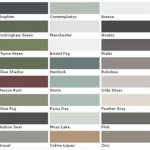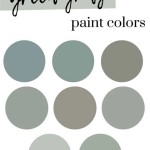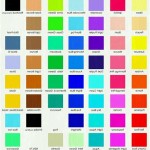Here is an article about choosing paint colors for fireplace walls:
What Color To Paint Fireplace Walls: A Comprehensive Guide
Selecting the right paint color for fireplace walls can significantly impact the overall ambiance and aesthetic of a living space. The fireplace often serves as a focal point, and the color surrounding it either amplifies its presence or subtly integrates it into the room's design. Careful consideration of various factors, including the fireplace material, room size, existing décor, and desired mood, is crucial for making an informed decision.
This article explores essential aspects of choosing suitable paint colors for fireplace walls. It will delve into color psychology, contrast, undertones, and practical considerations such as lighting and maintenance. It aims to provide a framework for creating visually appealing and harmonious living spaces centered around the fireplace.
Considering the Fireplace Material
The material of the fireplace itself—brick, stone, tile, or wood—plays a pivotal role in determining the best wall color. Each material possesses unique textures and inherent colors that interact differently with various paint shades. Understanding these interactions is fundamental to achieving a cohesive look.
Brick Fireplaces: Brick fireplaces often exhibit warm, earthy tones. Red brick, for instance, can be complemented by cool, neutral colors such as greys, blues, or greens. These cooler tones help to balance the warmth of the brick and prevent the space from feeling overly saturated with red. Alternatively, off-whites or creams can provide a softer contrast, creating a more traditional and inviting atmosphere. Painted brick fireplaces, commonly white or grey, offer greater flexibility in color choice. In these cases, bolder wall colors like deep blues, greens, or even charcoal grays can create a dramatic and modern effect.
Stone Fireplaces: Stone fireplaces present a diverse range of colors and textures, from light limestone to dark slate. Light-colored stone typically pairs well with lighter wall colors, such as soft greys, pale blues, or warm whites. These combinations create an airy and spacious feel. Darker stone, on the other hand, can be contrasted with brighter wall colors to prevent the space from feeling too heavy or somber. Consider using colors like warm oranges, yellows or even a vibrant teal to bring out the unique character of the stone. Avoid colors that are very similar to the stone's natural tones, as this can result in a monochromatic and uninspired look.
Tile Fireplaces: Tile fireplaces offer a broad spectrum of design possibilities due to the variety of colors, patterns, and textures available. The wall color should complement the tile's primary color and any accent colors present in the design. For example, a tile fireplace with blue and white patterns can be paired with a light blue or grey wall for a cohesive and serene aesthetic. If the tile features bold, geometric patterns, consider a neutral wall color to avoid overwhelming the space. In cases where the tile is a solid, neutral color, the wall can be painted in a more vibrant shade to add personality and visual interest.
Wood Fireplaces: Wood fireplaces, be they natural wood or painted, bring warmth and texture to the room. Natural wood often has warm undertones, so consider pairing it with colors that either complement or contrast these tones. Creams, beiges, and soft greens can create a cozy and inviting atmosphere. For a more dramatic effect, consider darker colors like navy or charcoal, which will make the wood stand out. Painted wood fireplaces offer greater flexibility. A white painted wood fireplace can be paired with virtually any wall color, while a darker painted wood fireplace might benefit from lighter walls to balance the space.
Understanding Color Psychology and Room Ambiance
Color psychology plays a significant role in shaping the mood and atmosphere of a room. Different colors evoke different emotions and perceptions, influencing how the space is experienced. Consider the desired ambiance when selecting a paint color for the fireplace walls.
Warm Colors: Warm colors, such as reds, oranges, and yellows, tend to create a sense of energy, excitement, and warmth. These colors can be ideal for creating a cozy and inviting space around the fireplace. However, using warm colors excessively can make a room feel smaller and more enclosed. If opting for a warm color, consider using it as an accent or pairing it with neutral tones to balance the effect. A deep, muted red can create a sophisticated and inviting atmosphere, while a bright orange might be better suited for a more playful and energetic space.
Cool Colors: Cool colors, such as blues, greens, and purples, generally evoke feelings of calmness, serenity, and relaxation. These colors can create a sense of spaciousness and airiness, making them suitable for smaller rooms or spaces where a more tranquil atmosphere is desired. Lighter shades of blue or green can create a peaceful and relaxing environment, while darker shades can add a touch of drama and sophistication. A soft, muted blue can be perfect for a reading nook near the fireplace, while a deep green can create a connection to nature.
Neutral Colors: Neutral colors, such as whites, greys, beiges, and creams, offer versatility and can be easily paired with other colors. They provide a blank canvas that allows the fireplace and other décor elements to take center stage. Neutral colors can also create a sense of elegance and sophistication. White walls can make a room feel brighter and more spacious, while grey walls can add a touch of modernity and sophistication. Beige and cream walls can create a warm and inviting atmosphere. Consider the undertones of neutral colors, as they can subtly influence the overall look and feel of the space. For example, a grey with warm undertones will feel different from a grey with cool undertones.
Accenting with Color: A strategic approach involves using color to highlight specific architectural features or create visual interest. Painting the fireplace wall in a different color than the surrounding walls can draw attention to the fireplace and make it a focal point. Alternatively, painting the trim or mantel in a contrasting color can accentuate the fireplace's architectural details. Using accent colors sparingly can add depth and dimension to the space without overwhelming it. Consider using throw pillows, artwork, or other accessories to introduce pops of color that complement the wall color.
Considering Lighting and Undertones
Effective lighting and understanding undertones are critical for accurately assessing how a paint color will appear in a room. Natural and artificial light can significantly alter the perceived color, while undertones can influence how the color interacts with other elements in the space.
Natural Light: The amount and type of natural light a room receives can significantly impact the perceived color of the walls. Rooms with abundant natural light tend to make colors appear brighter and more vibrant. In such cases, consider opting for slightly muted or toned-down colors to prevent the space from feeling too overwhelming. Rooms with limited natural light tend to make colors appear darker and more subdued. In these cases, consider opting for lighter and brighter colors to maximize the available light. Observe how the natural light changes throughout the day and how it affects the wall color before making a final decision.
Artificial Light: Artificial lighting, including incandescent, fluorescent, and LED lights, can also influence the appearance of wall colors. Incandescent lights tend to cast a warm, yellowish glow, which can enhance warm colors and make cool colors appear muted. Fluorescent lights tend to cast a cool, bluish glow, which can enhance cool colors and make warm colors appear dull. LED lights offer a range of color temperatures, allowing for greater control over the lighting environment. Experiment with different types of artificial lighting to see how they affect the wall color before making a final decision. Consider using dimmers to adjust the intensity of the lighting and create different moods.
Understanding Undertones: Every color has an undertone, which is a subtle hint of another color that can influence how it appears in different lighting conditions and when paired with other colors. Neutral colors, in particular, often have noticeable undertones that can significantly affect the overall look and feel of the space. For example, a grey with blue undertones will appear cooler and more modern than a grey with beige undertones, which will appear warmer and more traditional. To identify the undertone of a color, compare it to a pure version of the same color. Observe how the color leans toward other colors on the color wheel. Alternatively, compare the color to a white surface to see if it appears warmer (leaning towards yellow or red) or cooler (leaning towards blue or green). Consider how the undertones of the wall color will interact with the colors of the fireplace, furniture, and other décor elements.
In summary, selecting the right paint color for fireplace walls involves a multifaceted approach that considers the fireplace material, room ambiance, lighting conditions, and a deep understanding of color psychology. By carefully evaluating these factors, one can create a visually appealing and harmonious living space that centers around the fireplace.
:max_bytes(150000):strip_icc()/310555965_180387404555210_7279885457009375134_n-7d077830f3404ff0a4e38f6cf125618f.jpg?strip=all)
36 Gorgeous Painted Fireplace Ideas

Painted Fireplace Ideas 8 For Painting A

Fireplace Paint Ideas Dulux Projects

Wallpaper And Paint Fireplace Makeover Dream Green Diy

Beautiful Painted Fireplace Ideas For Your Next Diy Curbly

The Top Color Ideas For Painting A Brick Fireplace 700 N Cottage

Tall Fireplace Wall Transformation With Paint Thrifty Decor Diy And Organizing

Fireplace Paint Ideas Dulux Projects

13 Stunning Fireplace Accent Wall Ideas For Your Home Carla Bast Design
:max_bytes(150000):strip_icc()/update-home-interior-brick-german-schmear-0623-df5d1a55d4c54b6abca8dc23cda2af52-069773b50e3a468c966bfa4c94a622e6.jpeg?strip=all)
18 Painted Fireplace Ideas For A Cozy Modern Update
Related Posts








